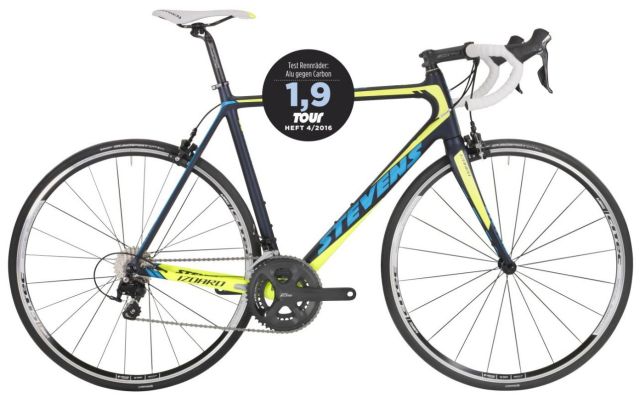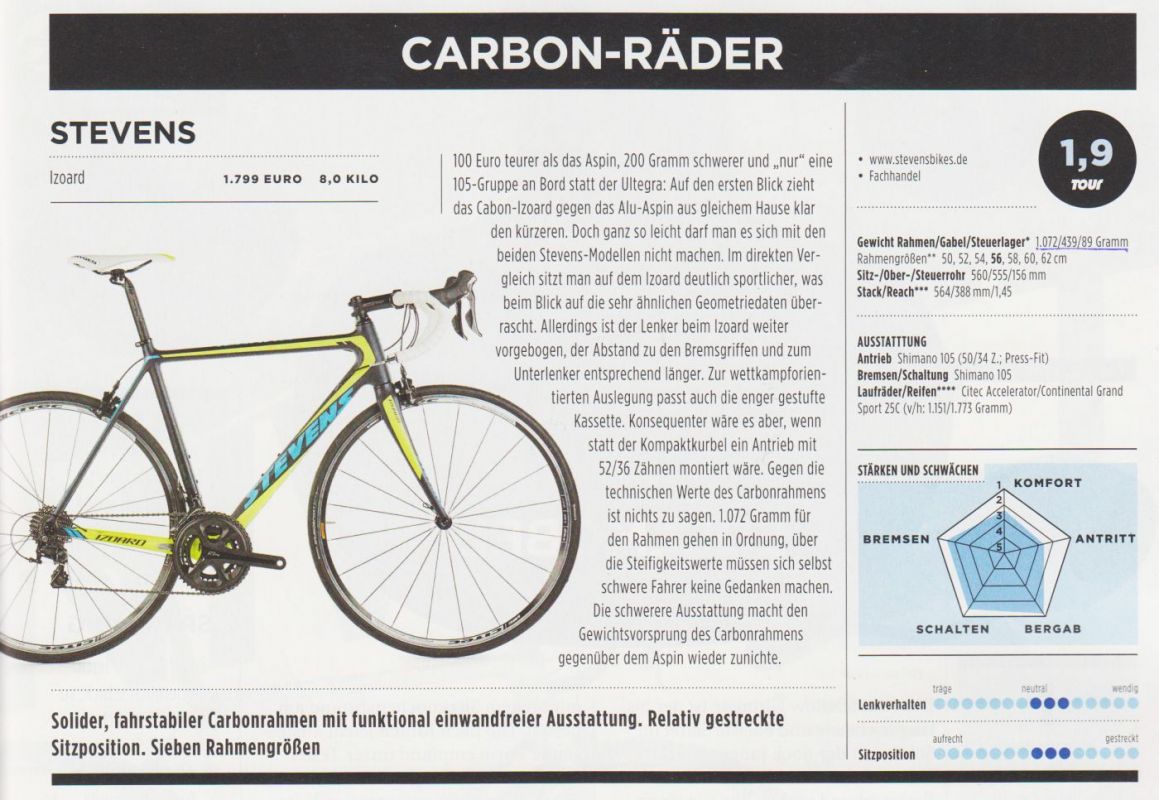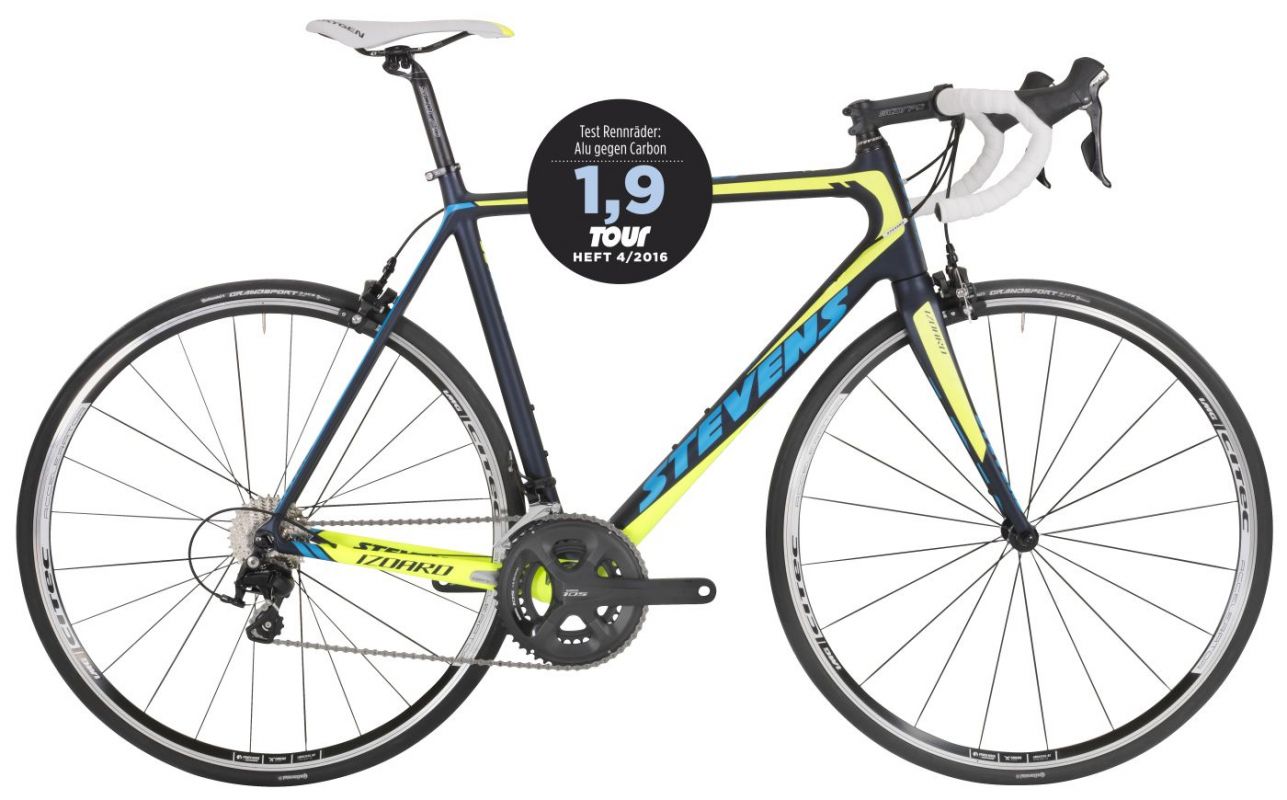Carbon or aluminium frame? When buying a new road bike about 15 years after carbon started to revolutionize frame design this is still a relevant consideration - at least in the price range between 1,400 and 2,000 Euros. That’s the range where the TOUR comparison between aluminium and carbon framed road bikes takes place.
The trend toward carbon will not be reversed, says TOUR. But up to a projected price of 2,000 Euros you still have interesting alternatives from aluminium like the STEVENS Aspin (see testreport) which the editors compared to the STEVENS Izoard. Since producing an aluminium frame is still cheaper, that frame can be spec’d with higher-quality gruppos and finishing kit to offer a better overall package.
Frame geometry – tie: Comparing these two models made sense due to their very similar geometry. The strengths and weaknesses displayed in TOUR’s proprietary ”spiderweb diagram” are also almost identical.
When comparing frame stiffness both bikes were almost equal with both bikes winning an A (”very good”), though the Izoard had a slightly higher bottom bracket stiffness – advantage Izoard.
In a direct comparison, despite the very similar geometry, the Izoard offers a more racy seating position – ”however the Izoard’s handlebar is bent slightly more forward increasing the distance between brake levers and drops,” the editors point out. The more closely stepped cassette is also rather competition-oriented. It would have been more consistent to choose a 53/36 chainring combination, says TOUR.
Frame Weight - advantage Izoard: Here, the Izoard, called after the Col d’Izoard, one of the most frequented Alpine passes in the Tour de France, has a slight advantage. Its frame set weighs in at 1,600g in size 56. The STEVENS Aspin (the Col d’Aspin is a pass in the French Pyrenees – also frequently visited in the Tour) weighs 1,790g.
Specs – advantage Aspin: Overall the Izoard was 180 grams heavier. The higher weight is due to the Shimano 105 components being heavier than its Ultegra counterpart and the combination of wheels and tires. - Izoard f/r: 1,151/1,773g (=2.924g); Aspin f/r: 1,166/1,595g (=2.767g); difference in favour of the Aspin: 153g.
Result: A Matter Of Taste:
With a grade of 1.7 (B+) The Aspin gets a slightly better mark than the Izoard at 1.9 (B). Which model now is better is a question of what you want in a bike.”
- Those who want a durable, light bike with Shimano Ultegra and its legendary reliable function, will choose the Aspin
- If you finally want to enter the world of carbon will get a ”solid, directionally stable carbon frame and well-performing specs with a slightly stretched-out seating position”, says TOUR. The frame is also a platform for those who enjoy upgrading their bike from time to time.
The STEVENS Izoard is available in frame sizes 50, 52, 54, 56, 58, 60 and 62cm for 1,799 Euros at your certified STEVENS dealer.




